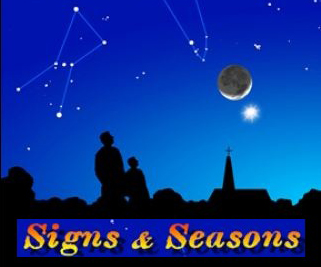 One of the many things that make astrology seem ridiculous to reasonable non-astrologers is the artificial justifications devised to make signs’ qualities seem to be somehow meaningfully associated with the names they bear. Not to mention that the constellations these signs are named after no longer share the same spots in space as their namesakes. Do people born in the teens of March (Pisces) really behave somewhat like fish while those born a few days later act more like male sheep (Aries)? Is a crab (Cancer) fundamentally opposite in character to a mountain goat (Capricorn)? Are tropical arachnids (scorpions, Scorpio) sexy plotters whose passions run deep, and just across a thin border from adventurous horses with human torsos (centaur, Sagittarius)? Who came up with this horse hockey and who on earth would believe it or go out of their way to defend it?
One of the many things that make astrology seem ridiculous to reasonable non-astrologers is the artificial justifications devised to make signs’ qualities seem to be somehow meaningfully associated with the names they bear. Not to mention that the constellations these signs are named after no longer share the same spots in space as their namesakes. Do people born in the teens of March (Pisces) really behave somewhat like fish while those born a few days later act more like male sheep (Aries)? Is a crab (Cancer) fundamentally opposite in character to a mountain goat (Capricorn)? Are tropical arachnids (scorpions, Scorpio) sexy plotters whose passions run deep, and just across a thin border from adventurous horses with human torsos (centaur, Sagittarius)? Who came up with this horse hockey and who on earth would believe it or go out of their way to defend it?
The fact is, it’s pretty fringe stuff at best and astrologers would do well to rethink where it came from, where they’re really going with it, and how to bring it into the fold of a reasonable natural view of things. Of course, we all know that the signs are just twelve 30-degree segments of the ecliptic starting at the vernal equinox. And we know that they got labeled with names of constellations they roughly coincided with several thousand years ago made up by cultures that no longer exist. They didn’t apply well back then, as not every ancient culture back then agreed on the animals or mythological entities the constellations suggested, and disparate world cultures completely disagree about them now. So, they are not only useless, they just confuse things.
Various half-hearted attempts have been made to change names one at a time – like changing Cancer to Moon-Child to better reflect its apparent qualities – but to no avail. These aren’t ultimately animals, people, gods, or anything else cute or anthropomorphic – they’re divisions of the seasons of the year and as such may at best share some qualities thereof. Thus, you might better call them early, middle, and late spring, early, middle, and late summer, and so on. Certainly the summer signs seem to be “warmer” than the winter ones – ruled by Moon (Cancer), Sun (Leo), and Mercury (Virgo) as opposed to Saturn (Capricorn), Uranus (Aquarius), and Neptune (Pisces). Of course, that’s only for the Northern Hemisphere – but Aussie and Kiwi starcasters will tell you they don’t reverse down-under, so maybe it’s a set of world seasons at best. Perhaps not seasons at all, just projected segments of our orbit.
If you want to get all scientific about it, you’ll find a lot more support for tangible differences in seasonal births ranging from disease susceptibility to professional predilection and success than you will for Sun signs. But that only applies when you’re talking about where the Sun is. In real astrology the terms should also apply to planets as well: Jupiter at 15 degrees “mid-autumn” (15 Scorpio) or Mars at 23 “early spring” (23 Aries). Really, you might be better off just numbering them 1-12, so the above would appear as 15-8 and 23-1, but that would have about as much appeal as the metric system – and no doubt Europeans and Americans would insist on using them in different order like they do months and days, so we would probably get even more confusion from it. Yet, the next step of simply using degrees 1-360 (as one does when calculating midpoints) would eliminate the sign factor entirely, and we know signs do have real qualities and need to be considered.
What to do? Since several generations of pop Sun-sign astrology has got even the worst skeptics knowing their signs, probably we’re stuck with what we’ve got (if the Vedic folks will just come around to it). And perhaps it will be a lesson in interpretive humility to have to remember that the animals and demigods don’t quite fit – early summer doesn’t walk sideways and late summer isn’t always so virginal, and that late fall creature with six limbs, well, don’t even ask. We could use the humility, because we don’t yet even know why the segments of the earth’s tilted attitude, regardless of what season they might represent in one hemisphere or another, should qualitatively affect anything that passes through them at all. We just notice that they do – maybe when we find out why that is, we’ll come up with a more appropriate set of labels for the phenomena.
More detail on the subject at Zodiac Signs: Foreground or Background?…
Ok, that didn’t clear up anything in the linear sector of my brain! : )
I’d like to say thank you for bringing the composite chart into the “mainstream” of astrology. I find that synestry shows attraction but composites show the essence which is more valuable and accurate for the long term. As a person (me) with a south node in Pisces in the 7th house conjunct Chiron … well, I’ll leave it at that!